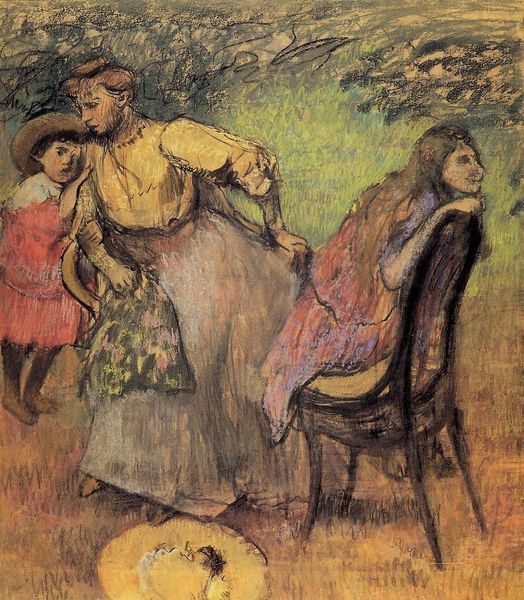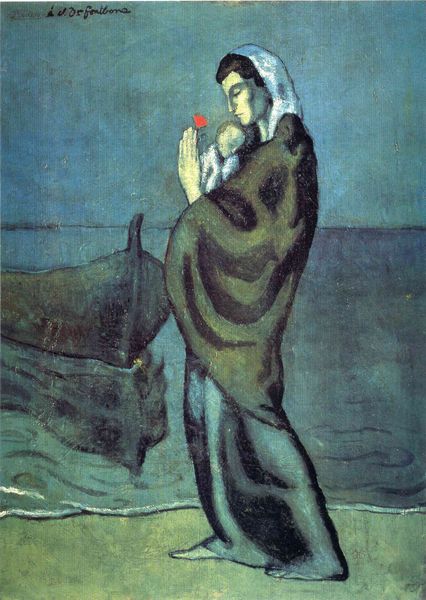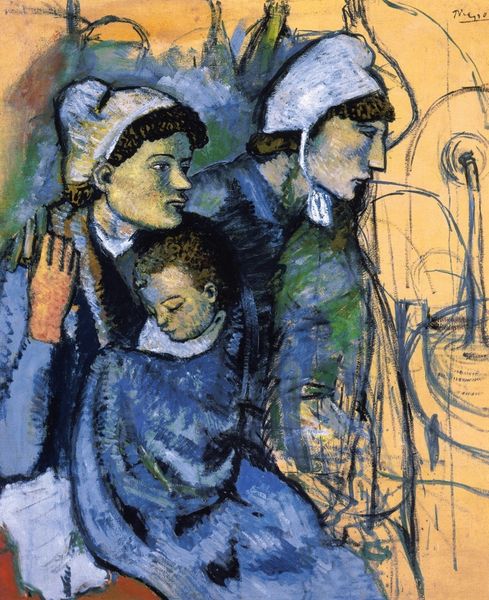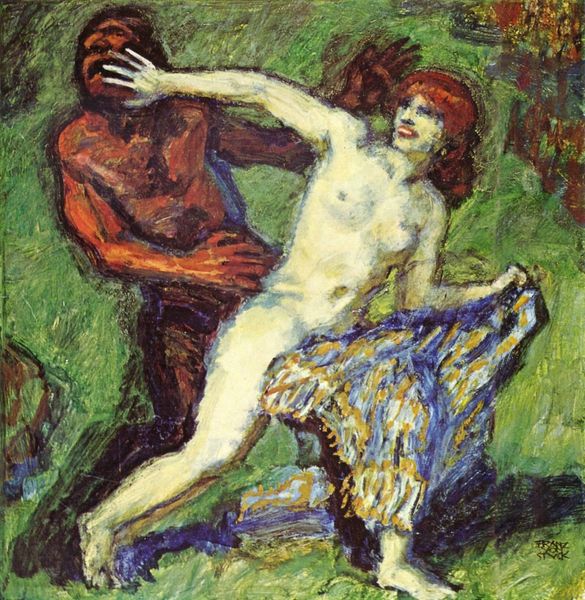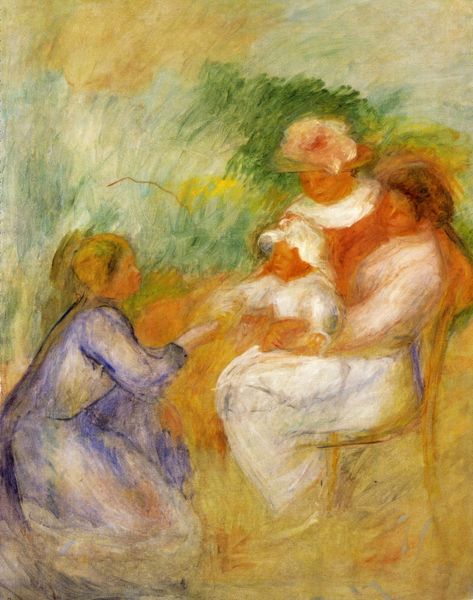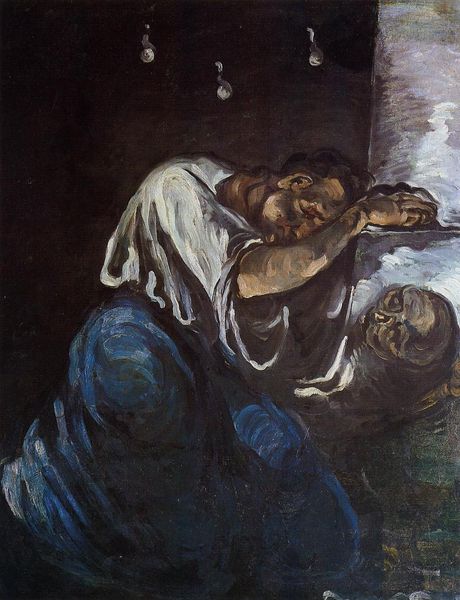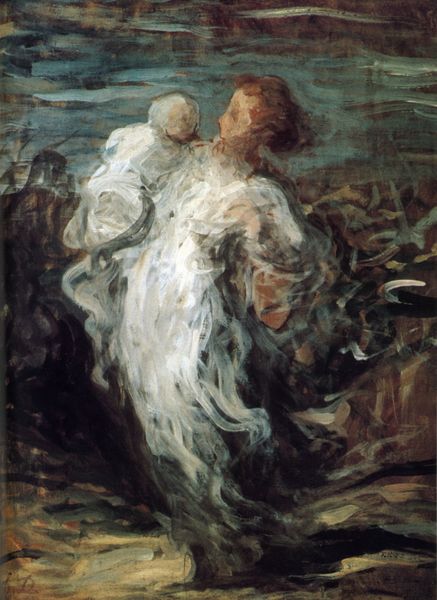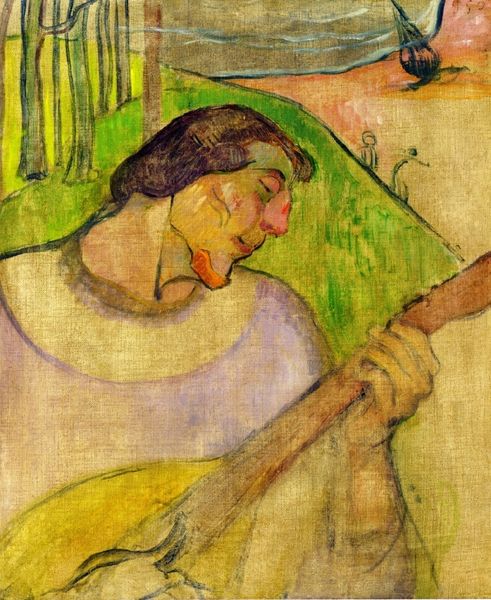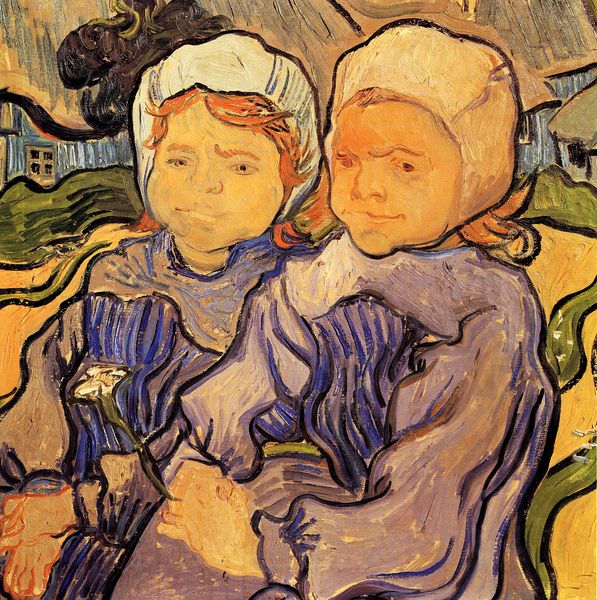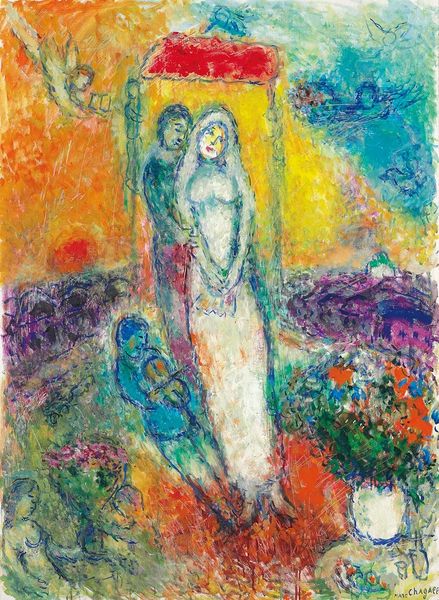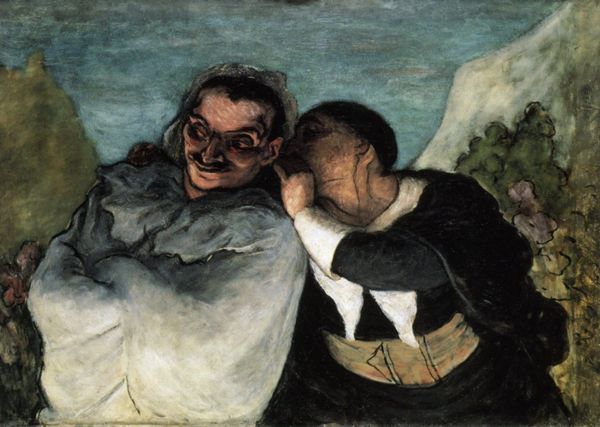
Dimensions: 73 x 60.5 cm
Copyright: Public domain
Curator: Here we have Van Gogh's "Pieta," painted in 1889. It’s currently housed here in the Van Gogh Museum in Amsterdam. Editor: Immediately, I am struck by the raw emotion; it’s a visceral rendering of grief, wouldn’t you agree? Curator: Absolutely. If you examine the brushwork closely, you will notice how he uses thick, impasto strokes to build texture and accentuate form. The swirling patterns create a sense of movement and instability, reflecting the emotional turmoil of the subject matter. Editor: This work carries the weight of Christian iconography, especially when considering that Van Gogh grew up in a religious environment. You see the echo of the Virgin Mary cradling the body of Christ. Here, it feels like a lament, amplified through color choice. Curator: Indeed. Van Gogh's use of color is particularly noteworthy. Notice the juxtaposition of the somber blues and greens with the feverish yellows and reds. This interplay of cool and warm tones creates a dynamic tension within the composition, furthering its emotional intensity. The artist clearly leverages color relationships for formal ends. Editor: Given that Van Gogh painted this while in the Saint-Paul-de-Mausole asylum, the Pieta carries an autobiographical resonance. It echoes not only universal suffering but the artist’s profound empathy toward all that endures affliction. Mary appears androgynous here, perhaps hinting at van Gogh identifying with her struggle? Curator: Perhaps. I think this piece demonstrates a fascinating distillation of form. It’s almost as if Van Gogh is deconstructing the traditional Pieta, rebuilding it with his own unique vocabulary of line, color, and texture. Editor: I think you’re right. The Pieta is no longer a scene but a symbol. We have the sorrowful mother and the dead Christ, rendered for eternity by this one small canvas. Van Gogh takes an image central to Western culture and uses it to transmit his own suffering and our collective griefs. Curator: It’s certainly a complex work to examine, full of personal and universal significance. Editor: Yes, a single canvas telling so many tales, open for new interpretations across time and culture.
Comments
No comments
Be the first to comment and join the conversation on the ultimate creative platform.

